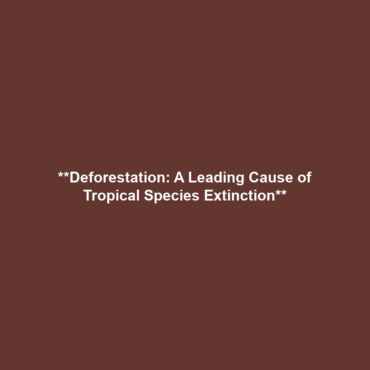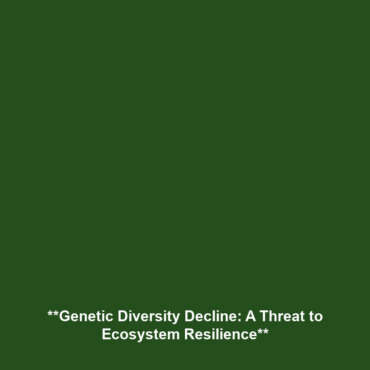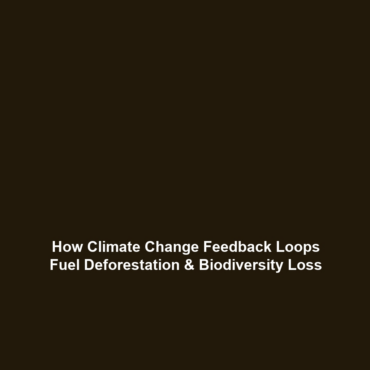Deforestation and Biodiversity Loss: A Critical Overview
Introduction
Deforestation stands as a formidable threat to biodiversity, particularly within the rich ecosystems of tropical rainforests. This destructive process not only depletes forests but also directly contributes to species extinction, creating a cascade of ecological consequences. As we delve into the association between deforestation and biodiversity loss, understanding its implications for various species facing extinction becomes crucial. The urgency of addressing deforestation is underscored by its significant role as a primary driver of biodiversity loss, pushing many species toward the brink of survival.
Key Concepts
Deforestation and Its Impact
Deforestation refers to the large-scale removal of trees and conversion of forested areas into non-forest land uses such as agriculture, urban development, or mining. This phenomenon has profound implications for biodiversity:
- Species Habitat Loss: Tropical rainforests, recognized for their rich biodiversity, serve as habitats for over 50% of Earth’s plant and animal species. The destruction of these ecosystems results in the loss of homes for countless species.
- Fragmentation: Deforestation often leads to habitat fragmentation, isolating species populations and making it difficult for them to breed, find food, and migrate, exacerbating their extinction risk.
- Climate Change: Deforestation contributes to climate change by releasing stored carbon dioxide and disrupting local climate patterns, further endangering species adapted to stable conditions.
Applications and Real-World Uses
Understanding how deforestation is used in the context of biodiversity loss is vital for crafting effective conservation strategies. Some real-world applications include:
- Conservation Initiatives: Organizations worldwide are developing conservation programs aimed at reforestation and habitat restoration to combat biodiversity loss.
- Sustainable Practices: Implementing sustainable land use practices, such as agroforestry, allows for agricultural development while preserving forest cover.
- Awareness Campaigns: Education and advocacy efforts focus on raising awareness about the importance of tropical forests and the species they harbor, compelling stakeholders to act.
Current Challenges
The study and application of deforestation’s impact on species extinction encounter several challenges:
- Data Limitations: There is often a lack of comprehensive data on species populations and their habitat requirements, complicating conservation efforts.
- Political and Economic Barriers: Socio-economic factors and government policies play a critical role; deforestation may be financially incentivized over sustainable practices.
- Public Awareness: A general lack of understanding among the public regarding the consequences of deforestation hampers advocacy and conservation success.
Future Research and Innovations
Future research initiatives are poised to make significant contributions to mitigating the effects of deforestation on species extinction:
- Remote Sensing Technology: Advances in remote sensing are enabling researchers to monitor deforestation rates and habitat changes in real-time, offering valuable data for conservation strategies.
- Biotechnological Solutions: Innovations in biotechnology may allow for genetic preservation of endangered species, increasing population resilience against habitat loss.
- Policy Innovations: New policy frameworks focused on sustainable development are being proposed, promising to align economic growth with environmental conservation.
Conclusion
In conclusion, deforestation emerges as a primary cause of species extinction, particularly in tropical rainforests, presenting significant challenges within the broader context of biodiversity loss. Addressing this critical issue requires a multi-faceted approach, encompassing conservation strategies, sustainable practices, and a commitment to raising public awareness. To learn more about how we can combat deforestation and protect biodiversity, we invite you to explore additional resources on forest conservation and species protection.


